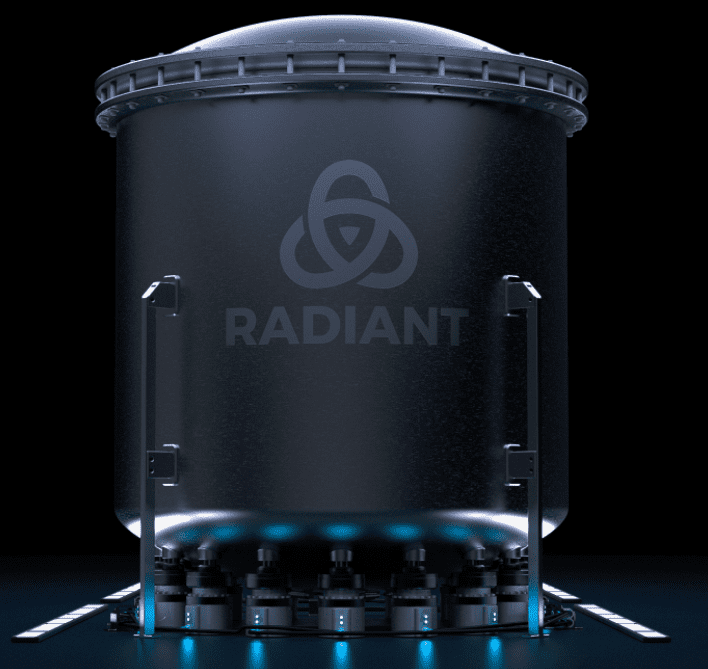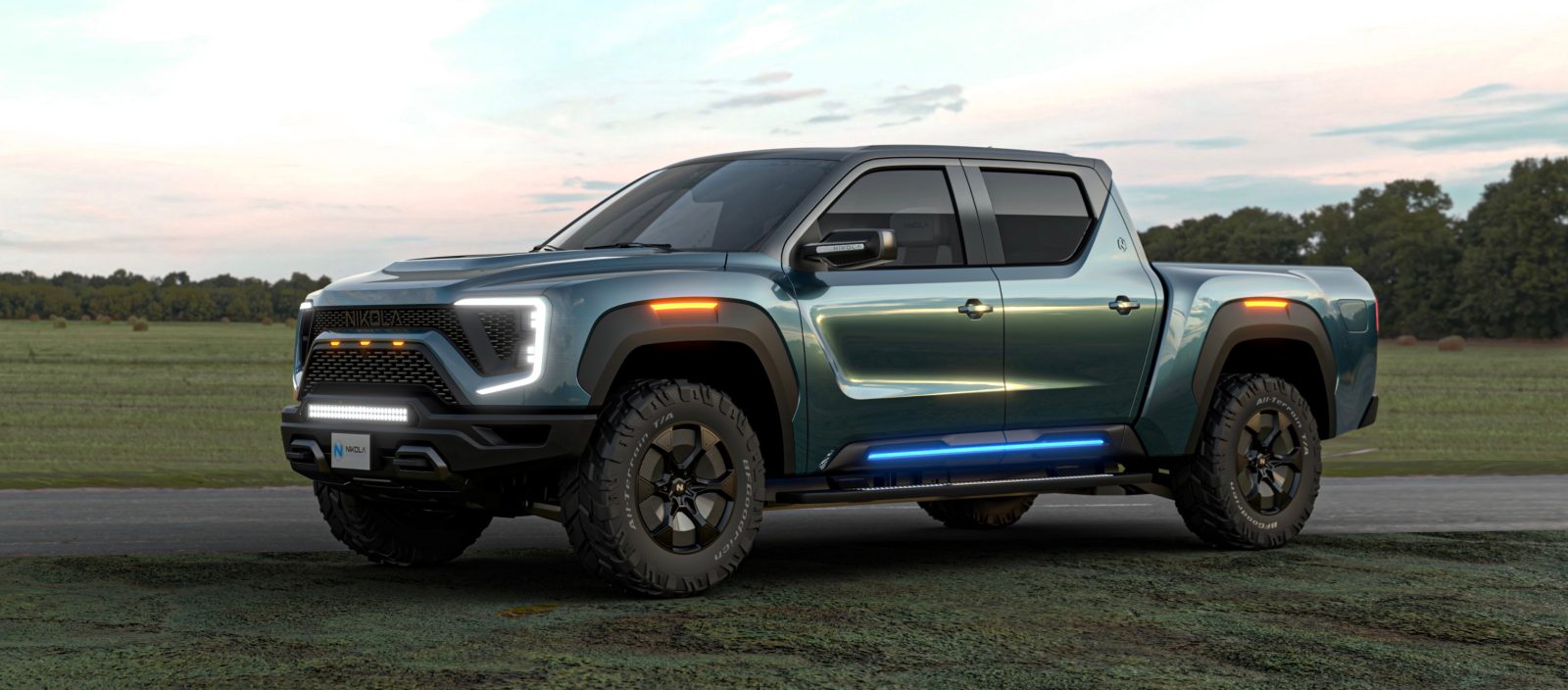 |
| Radiant’s microreactor is being developed for use in locations where other forms of power generation may not be practical, or even available. The company’s 1-MW-plus design makes it suitable to power small neighborhoods, remote commercial sites, and military bases. Courtesy: Radiant |
Radiant, founded by former SpaceX engineers, on Sept. 22 said it has raised $1.2 million from angel investors as it designs what the company calls a “clean energy alternative to fossil fuels for military and commercial applications.” Radiant executives said the funding is a combination of cash and cost-share commitments to support development of its more than 1-MW microreactor.
“Radiant is developing the first power generation system that can go anywhere,” company co-founder Doug Bernauer told POWER in an interview on Sept. 21. Bernauer is a former SpaceX engineer who while there worked on developing energy sources for an eventual Mars colony. Bernauer said he thinks microreactors hold the most promise to supply power for settlements on Mars, and during his research he saw an immediate opportunity to utilize the technology on Earth, which led him to found Radiant along with two other SpaceX colleagues.
“A lot of the microreactors being developed are fixed location,” Bernauer said. “Nobody has a [commercial] system yet, so there’s kind of a race to be the first.”
Patents for Upgrades
Radiant on Tuesday announced it has received two provisional patents for its advances in portable nuclear reactors. One of the technical upgrades decreases the time and cost for refueling the reactor; the other enables more-efficient heat transport from the reactor core.
Battelle Energy Alliance, the contractor that manages operations at the Idaho National Laboratory, and Radiant recently signed a memorandum of understanding seeking collaboration for development and testing of the technology.
“The National Reactor Innovation Center (NRIC) looks forward to working with Radiant to test its portable nuclear microreactor at Idaho National Laboratory. It’s part of our mission to empower innovators, and deliver successful outcomes. This is an opportunity to innovate in ways that bring a cleaner energy future,” said Dr. Ashley Finan, Director of NRIC at INL, in a statement.
INL earlier this year chose an Oklo-designed microreactor as the first to receive high-assay, low-enriched uranium, or HALEU, nuclear fuel from the laboratory to support a first-of-its-kind demonstration of Oklo’s Aurora microreactor.
The use of microreactors to expand distributed power generation is part of a trend toward providing electricity to remote areas, as well as to military bases and commercial operations that need access to power but are far from the traditional grid.
“Cost optimization, a reduced power peaking factor … that’s all part of our design,” Bernauer said, noting the microreactor’s portability provides “freedom and optimization. One of the benefits of the portable system is that it’s so small, we can autonomously operate it.”
DOD a Primary Customer
Bernauer said Radiant is operating under the auspices of the U.S. Department of Energy during testing, and looking at the Department of Defense (DOD) as its primary market, as the DOD seeks a way to provide power to military bases in areas where access to electricity is not available.
The DOD, like other enterprises, also is looking at ways to reduce or eliminate the use of diesel and other fuels to provide power generation in remote areas.
“We target 72 hours from setting it down onsite, to full power production capacity,” Bernauer said of Radiant’s microreactor. He said the unit could be moved to a new location “after waiting just one week. It’s a self-contained system after you hit your site. The operating life is four to eight years, and that’s of course demand dependent. It can sync with other units and with the grid as well.”
Bernauer said portability of Radiant’s microreactor is key to its deployment, unlike small modular reactors that may be designed specifically to scale up. “We can do a modular configuration, but we’re more interested in keeping it portable,” he said.
“In some areas of the world, reliance on diesel fuel is untenable, and solar and wind power are either unavailable or impractical,” said Jess Gehin, PhD, Chief Scientist, Nuclear Science & Technology Directorate at INL. “Clean, safe nuclear microreactors are emerging as the best alternative for these environments.”
Eliminating Emissions, Fuel Transport Concerns
Diesel has long been the fuel of choice to run generators at remote sites. That brings both logistical challenges and environmental concerns, and the transport of fuel is a specific issue.
The U.S. Army in October 2018 published a report, titled “Mobile Nuclear Power Plants For Ground Operations,” that said about half of the 36,000 casualties in a nine-year period during the war in Iraq earlier this century came during land transport missions.
Microreactor developers have cited several important benefits, touting not only that the energy is clean, but that fuel can last four-plus years, refueling is not difficult, and the technology can work in areas with no sun or wind—even underground.
Radiant’s microreactor “is designed to power about 1,000 homes continuously for up to eight years,” according to the company. The microreactor is designed to fit in a shipping container—”single-high 8[feet] x 20 [feet], 9-and-a-half-feet high,” Bernauer said. It could be transported by air, ship, and road.
The company has said its microreactor is also safer than traditional nuclear power plant designs, leveraging particle fuel that withstands high temperatures and does not melt down. The use of helium coolant greatly reduces corrosion, boiling, and contamination risks associated with more traditional water coolant.
“We will be using a very well-established, extensively tested fuel, that’s already had hundreds of million of dollars of DOE testing,” Bernauer said. “We are taking what exists now and making it purely able to compete on cost.”
A company investor said the engineering and aerospace background of the Radiant team is an important aspect of his decision to support the effort.
“The innovative and ambitious team at Radiant has expertise from SpaceX as well as impressive nuclear industry credentials,” said investor Tom McInerney. “They have what it takes to bring new clean-energy solutions to market, and I’m excited to be part of their journey.”
“The nuclear industry can benefit greatly from aerospace technologies and software developments that have occurred over the past 20 years, and have not made their way into nuclear,” Bernauer said. He said that unlike some other microreactor developers, who may have academic backgrounds, his group is “engineers making an engineering product.”

